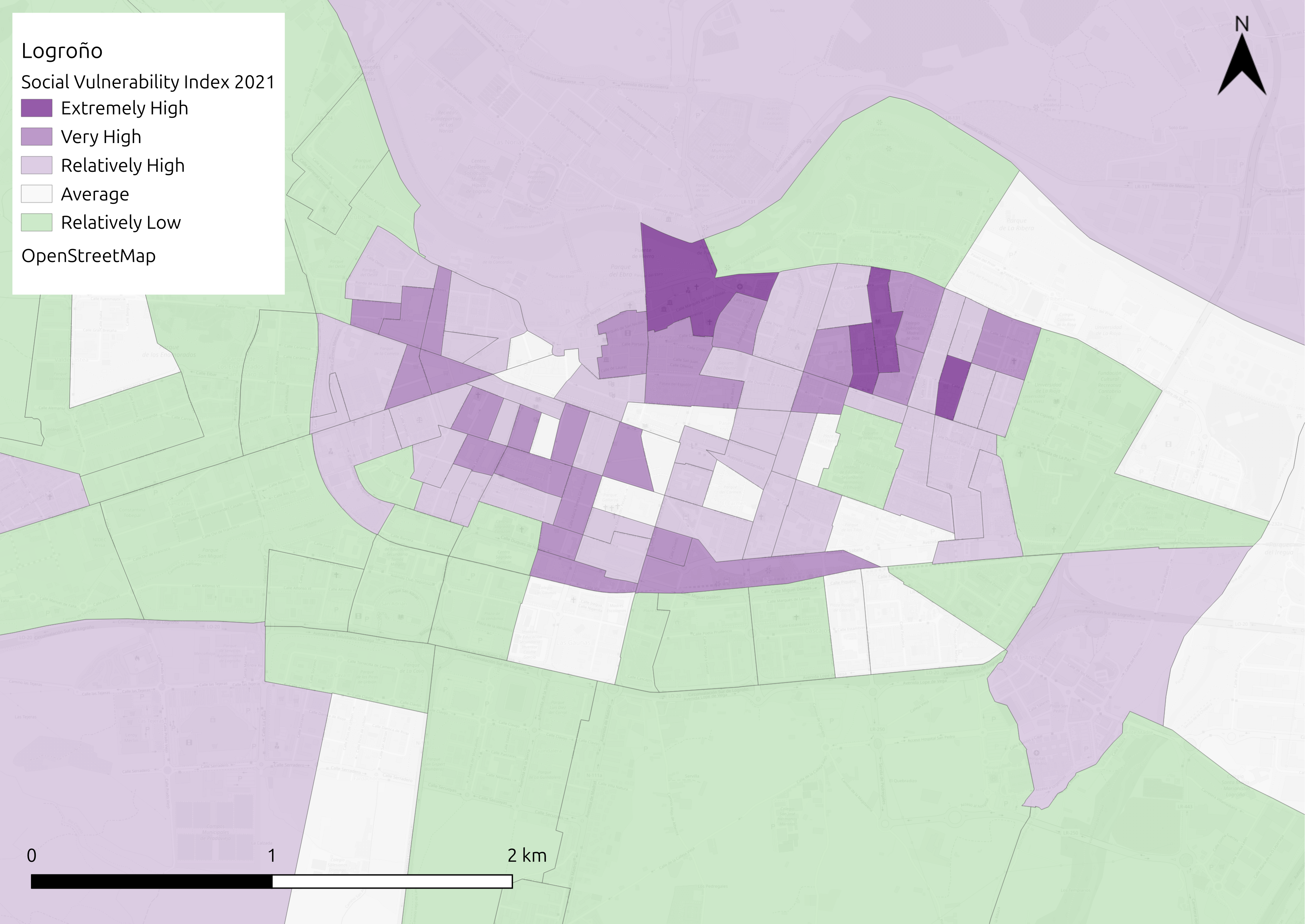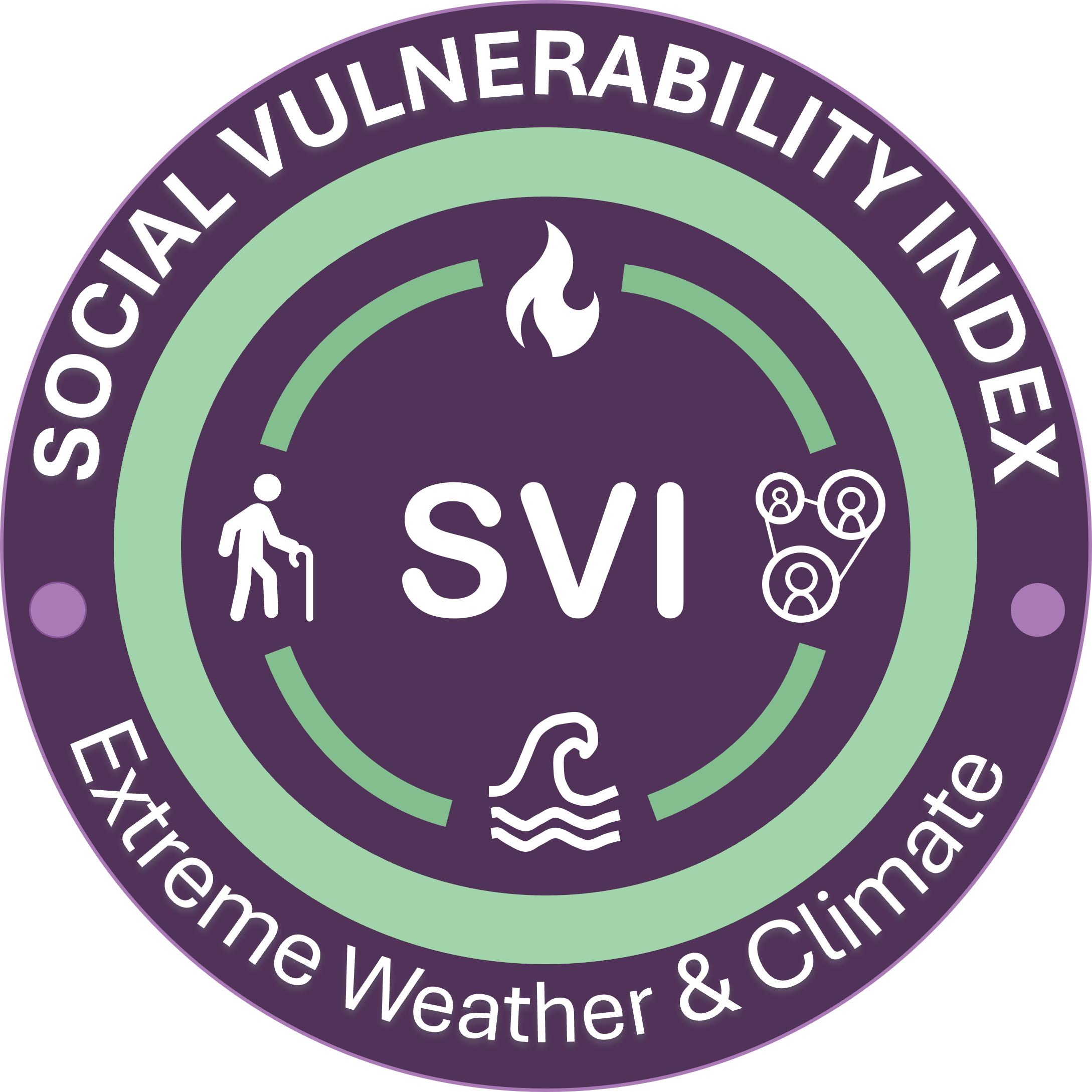Logroño#
(Spanish: [loˈɣɾoɲo] ⓘ) (From Wikipedia) The capital of the autonomous community of La Rioja, Spain. Located in the north of the Iberian Peninsula, primarily in the right (South) bank of the Ebro River, Logroño has historically been a place of passage, such as the Camino de Santiago. Its borders were disputed between the Iberian kingdoms of Castille, Navarre and Aragon during the Middle Ages.
Indicators available in Logroño, Spain, to determine vulnerability to extreme heat (taken from the national census for Spain and from European Copernicus datasets on land cover).
Indicator |
Domain |
Dimension |
Rationale |
|---|---|---|---|
Boys under 5 years of age |
Age |
Sensitivity |
Physiologically, the young have a greater susceptibility to the effects of extreme heat. |
Girls under 5 years of age |
Age |
Sensitivity |
Physiologically, the young have a greater susceptibility to the effects of extreme heat. |
Males over 75 years of age |
Age |
Sensitivity |
Physiologically, older people have a greater susceptibility to the effects of extreme heat. |
Females over 75 years of age |
Age |
Sensitivity |
Physiologically, older people have a greater susceptibility to the effects of extreme heat. |
People with a disability preventing work |
Health |
Sensitivity |
Physiologically, those with a disability have a greater susceptibility to the effects of extreme heat. |
One parent households |
Income |
Adaptive Capacity – Ability to Prepare/Respond/Recover |
One parent households are more likely to have less disposable income compared to other households |
Dependents rate |
Income |
Adaptive Capacity – Ability to Prepare/Respond/Recover |
People with dependents may struggle to respond to and recover from extreme climatic events |
Unemployment |
Income |
Adaptive Capacity – Ability to Prepare/Respond/Recover |
Unemployed persons are more likely to have less incomes, and have limited ability to make physical adjustments to their property to adapt to extreme heat |
Population attending university |
Income |
Adaptive Capacity – Ability to Prepare/Respond/Recover |
Students are more likely to have lower incomes, plus have limited ability to make physical adjustments to their property to adapt to extreme heat |
Population with no higher education |
Information Access/Use |
Adaptive Capacity – Ability to Prepare/Respond/Recover |
People with no formal education may find it difficult to interpret and/or act up on information received |
Percentage of foreign nationals |
Local Knowledge |
Adaptive Capacity – Ability to Prepare/Respond |
Foreign nationals are likely to have less local knowledge and be less aware of hazards |
Households renting |
Tenure |
Adaptive Capacity – Ability to Prepare |
Renters are more likely to have lower incomes, plus have limited ability to make physical adjustments to their property to adapt to extreme heat |
Households with one person |
Social Network |
Adaptive Capacity – Ability to Respond/Recover |
Those living alone likely lack a support network that can assist them during a heatwave event |
Primary school age children |
Social Network |
Adaptive Capacity – Ability to Respond/Recover |
Those with primary school age children tend to have a stronger social network that can assist them during a heatwave event |
Dwelling construction year |
Housing Characteristics |
Enhanced Exposure |
Households built prior to 1970 may be of poor quality and may not offer as much protection to residents as compared to modern housing |
Impervious surface |
Physical Environment |
Enhanced Exposure |
Increased area of impervious surface enhances the urban heat island affect |
Tree cover |
Physical Environment |
Enhanced Exposure |
Increased area of tree cover and greenspace reduces the urban heat island affect |

